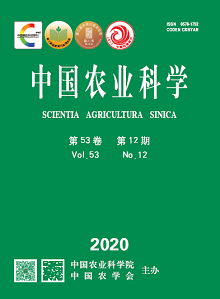【Objective】 In order to provide more knowledge about the chemical structure and biological activity of black sesame melanin, black sesame melanin extract was isolated, and the structure of obtained fractions was elucidated by multiple spectroscopic methods. The in vitro antioxidant activity of obtained fractions was also evaluated. 【Method】 Melanin was extracted from black sesame hull by the methods of alkali extraction and acid precipitation. Crude black sesame melanin extract was then isolated by HW-40C size exclusion column, and the yields, color value and melanin content of obtained fractions were determined. The structure of each fraction was studied by extensive spectroscopic methods, including UV-Vis, elemental analysis (EA), fourier transform infrared spectroscopy (FT-TR), nuclear magnetic resonance spectroscopy (1H and 13C), X-ray photoelectron spectroscopy (XPS), electron paramagnetic resonance (EPR), and X-ray diffraction (XRD). Four methods, including 1,1-diphenyl-2-picrylhydrazyl (DPPH) radical scavenging assay, 2,2'-azino-bis (3-ethylbenzthiazoline-6-sulphonic acid) (ABTS) radical scavenging assay, ferric reducing antioxidant power (FRAP) and oxygen radical absorbance capacity (ORAC) assay, were used to evaluate the in vitro antioxidant activity of each fraction of black sesame melanin. 【Result】 Black Fr1 and brown Fr2 were isolated from black sesame melanin extract, with the yields of 60% and 24%, respectively; the molecular weights of these two fractions were 38 800 Da and 6 000 Da, respectively, and the melanin content of two fractions was 782.16 mg SME·g -1 DW and 884.66 mg SME·g-1 DW, respectively. Elemental analysis showed that Fr1 was eumelanin and Fr2 might be allomelanin. The UV-visible and infrared spectrum of Fr1 and Fr2 demonstrated that there were functional groups such as benzene ring, -OH, -NH2, -COOH and nitrogen heterocycle in the structure of both fractions. The results of1H-NMR indicated that Fr1 possessed more aliphatic hydrogen and substituted aromatic ring compared with Fr2. 13C-NMR spectrum indicated that there were more aliphatic carbon and carbonyl and less aromatic carbon in Fr1 compared with Fr2. The results of XPS showed that the content of functional groups of two fractions was different, C1s spectra indicated that the ratio of C-C(H) and C=O group of Fr1 was higher than that of Fr2, but the ratio of C-OH/C-N and O-C=O was lower than that of Fr2. N1s spectra showed that the ratio of C-NH of Fr1 was higher than that of Fr2, the ratio of aromatic N was lower than that of Fr2, and there was no C-NH3+ in Fr1. O1s spectra indicated that the ratio of C-OH of Fr1 was higher than that of Fr2, but the ratio of C=O of Fr1 was slightly lower than that of Fr2, and there was no absorbed H2O in Fr1. The results of EPR showed that these two fractions demonstrated strong paramagnetic resonance properties, the g values of Fr1 and Fr2 were 2.0078 and 2.0085, respectively, and the ΔHpp of Fr1 and Fr2 were 0.7430 and 0.6950 mT, respectively. The results of X-ray diffraction showed that both fractions of black sesame melanin were amorphous compounds, and there was a planar stack structure in Fr1. The IC50 values of DPPH free radical scavenging of Fr1 and Fr2 were 83.00 and 54.00 μg·mL-1, respectively. The IC50 values of ABTS free radical scavenging of Fr1 and Fr2 were 53.00 and 30.00 μg·mL-1, respectively. The FRAP values of Fr1 and Fr2 were 1.05 and 1.62 mmol FeE·g-1 DW, respectively. The ORAC values of Fr1 and Fr2 were 3 141.80 and 4 143.76 μmol TE·g -1DW, respectively. 【Conclusion】 Above results indicated that Fr1 was the main fraction of black sesame melanin, and spectroscopic analysis indicated that Fr1 was eumelanin and Fr2 might be allomelanin. Functional groups, such as carbonyl, hydroxyl, amino, aromatic ring and nitrogen heterocycle, existed in both fractions, and the aromaticity of Fr2 was higher than that of Fr1. The DDPH and ABTS free radical scavenging ability, and FRAP and ORAC antioxidant capacity of Fr2 were higher than that of Fr1.









